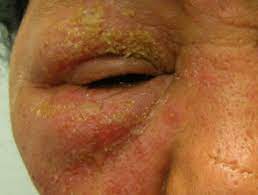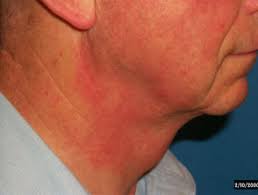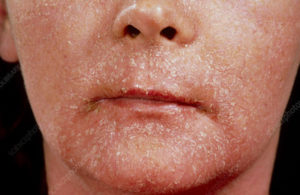It is the job of the beauty industry to sell us all the hype and the myth of the perfect ingredient that will address and fix our skin, hair and other beauty woes for a bargain or by selling us a package.
As a doctor, I see the flip side of this regularly, in the form of reactions to common ingredients used within the cosmeceutical industry, that nonetheless causes problems for patients.



- So what exactly, is a cosmetic and how does it differ from a drug?
A cosmetic is defined as a topically applied product that is used to beautify, cleanse or protect the hair, skin, teeth or complexion.
A cosmetic should not contain any active drug ingredient that may affect the structure or function of the skin. The demaraction of cosmetics and drugs is not always clear as there are many products available that have two intended uses, for example, an antidandruff shampoo is a cosmetic because it is intended to cleanse the hair, but it also contains a drug to treat the scalp and dandruff. Such products must comply with the requirements for both cosmetics and drugs.
In 2015 the EWG determined that the average American woman came into contact with 168 potential ingredients and the average man, 85 in the course of a single day.
Closer to home, it is estimated that on average women are using at least seven types of cosmetic each day and reactions to these products are quite common. Studies suggest that up to 10% of the population will have some type of reaction to a cosmetic throughout a lifetime but this may be an underestimated as many mild reactions will not warrant seeking medical attention.
So what kind of reactions can occur?
- contact urticaria
- burning sensation to the affected area, with hives or weals, usually settles within hours
- anaphylaxis
- Breathing issues, swelling. Rare but may be fatal.
- irritant contact dermatitis
- 80% of all contact dermatitis, with a reaction to exposure to active ingredients. Often common in people with sensitive skin.
- patches of itchy, scaly skin, red rash or occasionally, blisters.
- allergic contact dermatitis
- allergic contact dermatitis occurs when a person’s immune system is sensitised to an allergen (the person is allergic to a specific ingredient).
- A rash usually develops more than 12 hours after contact with the allergen and peaks about 48 hours after exposure.
- symptoms of allergic contact dermatitis include redness, swelling, intense itching and urticated erythema.
- the face, lips, eyes, ears and neck are the most common sites for cosmetic allergy.
- photo contact dermatitis
- caused by the interaction of sunlight with an ingredient in a cosmetic.
Some people may develop more than one type of reaction. For example, an individual with sensitive skin may be prone to reaction with some active ingredients which in turn increases their likelihood of becoming sensitised, as their skin barrier function is weakened.
The range of cosmetics is vast, so the pool of allergens is infinitely huge. The commonest allergens that appear to most frequently cause cosmetic allergy are
- fragrances
- preservatives and
- paraphenylenediamine (PPD) found in hair dyes.
Fragrances
- the most common reason for contact dermatitis from cosmetics.
- 70–80% of fragrance allergy can be picked up by patch testing
- Cosmetics labelled “unscented” does not mean fragrance-free; some unscented products may contain a fragrance to mask another chemical odour.
- Products should be labelled 'fragrance-free' or 'without perfume' to indicate no fragrances have been used.
Preservatives
- Preservatives are the second most common cause of contact allergic dermatitis to cosmetics.
- Cosmetics that contain water have a preservative in them to prevent bacterial or fungal growth.
- Some of the preservatives most commonly found in cosmetics have been covered
Paraphenylenediamine in hair dye
- Paraphenylenediamine (PPD) is the third most common ingredient after fragrances and preservatives to cause allergic contact dermatitis.
- It is used widely in permanent hair dyes because it results in a natural colour.
- Reactions to PPD may be mild and involve dermatitis to the upper eyelids or rims of the ears or may be more severe with swelling of the scalp, face and more widely.
How is cosmetic allergy diagnosed?
By patch testing at a clinic designed to test for allergies.
What is the treatment for cosmetic allergy?
- cease using the product
- seek medical attention - using a mild steroid, antihistamines if advised
- occasionally if the reaction results in an infection, antibiotics may be needed
Prevention of cosmetic allergy
- The best way to prevent contact allergic dermatitis to cosmetics is by avoiding all products that contain the allergen.
- Seek personalised skin advice especially if you have sensitive or sensitised skin to minimise the risk of adverse effects.
- Read the list of ingredients on all cosmetic products to identify if they contain a relevant allergen.
- Test new cosmetics placing a small sample of the product on the inner wrist or elbow and observe for 24–48 hours.
- Choose products with few ingredients to minimise potential allergens.
- Apply perfume to clothing rather than to the skin; allow the perfume to dry before putting on the clothes.
- Look for products that are hypoallergenic, fragrance-free and non-comedogenic. However, be aware that these may still cause reactions.
Your skin is the largest organ in your body and despite all the marketing hype thrown at all of us daily by the multi-billion dollar beauty industry, it may be in your best interests and that of your skin, to seek personalised advice around it, and its needs so you avoid potential adverse effects.
When it comes to your skin, tried and true is far better than pursuing every new trend that is out there.


